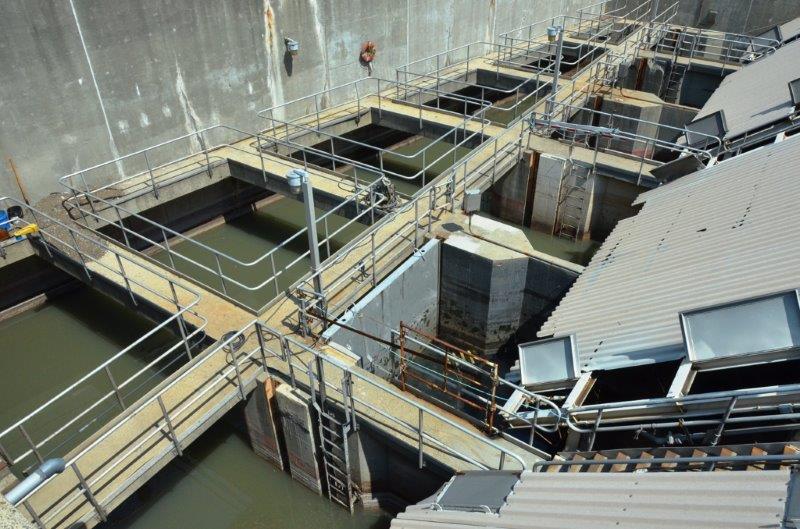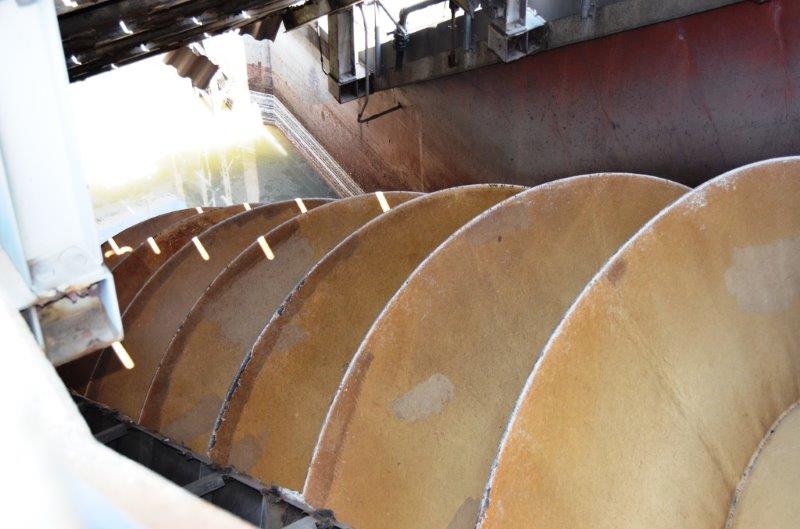EATONTOWN, N.J. -- Passaic Valley Sewerage Commission’s Newark Bay Treatment Plant is New Jersey’s largest sewer treatment plant and the fifth largest sewage treatment facility in the nation.
 Situated on a low-lying, 140-acre site at the edge of Newark Bay, the PVSC plant treats the wastewater, municipal sewage sludge and drinking water sludge from 3.43 million residents of New Jersey and New York. This represents approximately 25 percent of New Jersey and 15 percent of New York City wastewater treatment.
Situated on a low-lying, 140-acre site at the edge of Newark Bay, the PVSC plant treats the wastewater, municipal sewage sludge and drinking water sludge from 3.43 million residents of New Jersey and New York. This represents approximately 25 percent of New Jersey and 15 percent of New York City wastewater treatment.
When Hurricane Sandy made landfall along the coast of New Jersey on Oct. 29, 2012, a twelve-foot wall of water pushed across the PVSC’s Newark Bay Treatment Plant. The saltwater flooded a network of tunnels and equipment, knocking out the plant’s main power feeder lines and disabling the backup emergency generators.
 With raw sewage backing up into the pipes that normally transfer sewage from homes and businesses to the plant for treatment, plant operators acted to prevent a widespread public health emergency by opening the plant’s discharge gates, allowing the untreated sewage to flow into Newark Bay.
With raw sewage backing up into the pipes that normally transfer sewage from homes and businesses to the plant for treatment, plant operators acted to prevent a widespread public health emergency by opening the plant’s discharge gates, allowing the untreated sewage to flow into Newark Bay.
Before operations could be restored, eight hundred and forty million gallons of raw sewage flowed untreated into the Passaic River. The plant would remain inoperable for 48 hours. On November 3, workers succeeded in restoring primary wastewater treatment and disinfection capabilities.
The Newark Bay facility had sustained an estimated $200 million in damages to vehicles, buildings, inventory, equipment and contents on the ground level as well as catastrophic damages to plant facilities located below ground. The resulting damages caused an extended loss of treatment capability with severe economic impacts on the region. The facility would not achieve full permit compliance until July 2013.
 Over the past three years, FEMA has obligated 46 projects for the Passaic Valley Sewerage Authority to date for a total obligated amount of $443,288.037. Three amendments are under review and several more are being written for a total of $8.8 million.
Over the past three years, FEMA has obligated 46 projects for the Passaic Valley Sewerage Authority to date for a total obligated amount of $443,288.037. Three amendments are under review and several more are being written for a total of $8.8 million.
PVSC applied for approximately $800 million in grants to underwrite a long term mitigation plan for this facility. The plan called for the construction of a flood wall capable of withstanding a 500-year flood event. Mitigation funds will pay for the flood wall to be built around the entire perimeter of the facility. These major mitigation initiatives are intended to prevent a recurrence in any future events. The time frame for design and construction of the flood wall is estimated to be 5 to 7 years.
The Plant is also undertaking short term mitigation measures that include the installation of ‘muscle walls’ (temporary flood barriers) around critical infrastructure, elevation of high-voltage electrical lines on 27-foot utility poles, adding pump stations and installing three natural gas-fired turbines as a backup power source in a similar emergency. PVSC is awaiting a determination from FEMA on this application.
When approved, PVSC Mitigation project will be the largest mitigation project in the state of New Jersey.
FEMA's mission is to support our citizens and first responders to ensure that as a nation we work together to build, sustain, and improve our capability to prepare for, protect against, respond to, recover from, and mitigate all hazards.
Follow FEMA online at www.twitter.com/FEMASandy,www.twitter.com/fema, www.facebook.com/FEMASandy, www.facebook.com/fema, www.fema.gov/blog, and www.youtube.com/fema.Also, follow Administrator Craig Fugate's activities at www.twitter.com/craigatfema.
The social media links provided are for reference only. FEMA does not endorse any non-government websites, companies or applications.”
